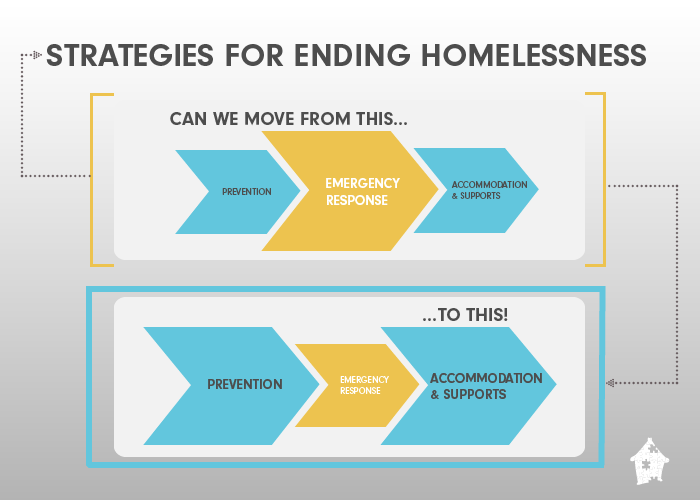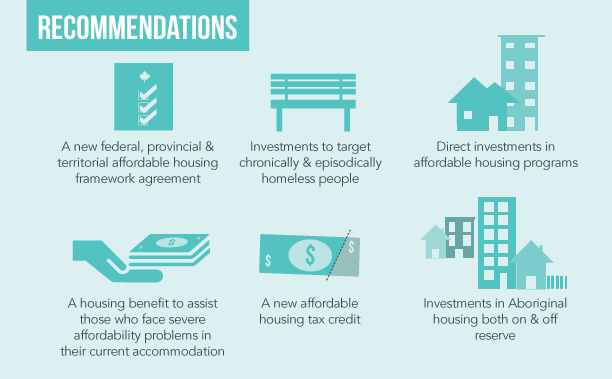When we have so many social services in a city like Hamilton, ON, how is it possible that homelessness is still so prominent?
We received this question from Kathleen M., who passed it on from a student.
Many Canadian cities have agencies and programs that try to meet the needs of people experiencing homelessness, yet homelessness continues to be a problem. The vast majority of such services fall in the emergency services category, which do little to prevent people from becoming homeless in the first place. In the words of the Homeless Hub’s State of Homelessness in Canada 2014 report: “For years we have been investing in a response to homelessness that, while meeting the immediate needs of people in crisis, has arguably had no impact in reducing the scale and scope of the problem.”
This isn’t to say we haven’t been making progress, because we certainly have. The At Home/Chez Soi project showed that with the right interventions (housing people quickly with appropriate supports), people who are chronically homeless can be and remain housed. As more municipalities adopt housing first models we will see improvements, but not complete eradication, of homelessness. The reasons why are numerous and complicated, but the two most pressing are as follows:
Lack of affordable housing
Over the past few decades, federal funding for affordable housing has slowed. In 1982 20,450 new affordable units were built; in 1995 less than 1,000; and in 2006, 4,393. The increase in 2006 was due the efforts of Jack Layton and the NDP, who secured $4.6 billion for affordable housing and mass transit. (This is considered one of Layton's biggest triumphs.)
All in all, over 100,000 units were not built due to funding cuts and cancellations.
This has left Canadians overwhelmingly dependent on skyrocketing private rental markets. According to the latest annual housing affordability survey, Vancouver, is the second most unaffordable city in the world, with Toronto, Victoria, Kelowna, and the Fraser River Valley areas also deemed unaffordable.
As a result, many cities have hundreds of thousands on waiting lists for subsidized housing. An estimated 18% of Canadians spend more than half of their income on housing, which places them at risk for homelessness.
Poverty
In Canada, minimum wage has not kept up with the rate of inflation, nor have social assistance rates. This, combined with decreasing numbers of long-term, well-paying jobs with benefits, has left people less financially secure. As Vineeth wrote back in November, Canada now ranks 24th out of 35 countries when it comes to child and family poverty. And the income gap between the rich and poor is widening, with the wealthiest 10% of Canadians seeing a median net worth increase of 42% since 2005.
The real solution to homelessness
It isn’t just more shelters, beds, or emergency services—it’s a real commitment to building affordable housing as soon as we can.
To learn more about what we can do to end homelessness, read our State of Homelessness in Canada 2014 report.
This post is part of our Friday "Ask the Hub" blog series. Have a homeless-related question you want answered? E-mail us at thehub@edu.yorku.ca and we will provide a research-based answer.




